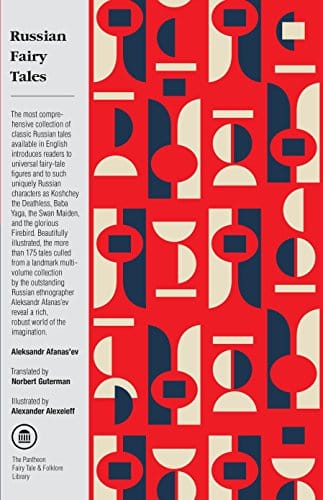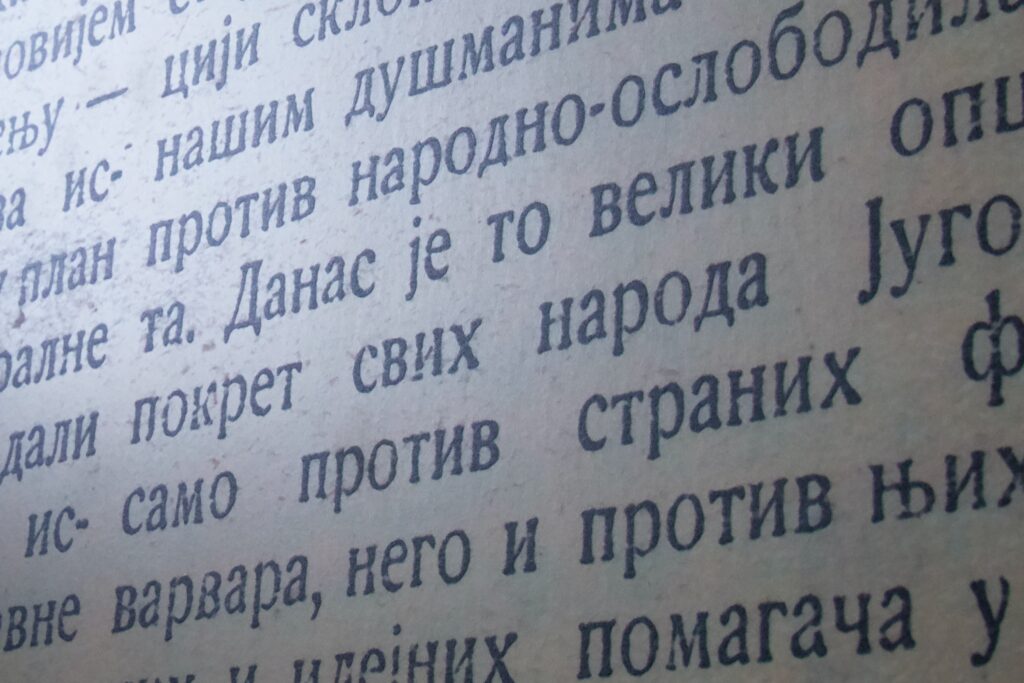
How to Read Russian: Tips and Resources
Is reading fluently in Russian one of your language learning goals?
Then this post is for you. Read our tips for reading in Russians, some super effective methods to make it easier and, of course, a thorough list of resources to practice with.
Contents
- 1. Learn the Cyrillic Alphabet
- 2. Practice Sounding Out Each Letter on Its Own
- 3. Learn the Most Common Russian Words First
- 4. Use Context To Understand Words You Don’t Know
- 5. Find Words That Mean the Same in Russian and English
- 6. Learn Basic Russian Reading Rules
- 7. Practice
- 8. Find a Russian Friend To Read To
- 9. Use These Resources To Practice
- And One More Thing...
Download: This blog post is available as a convenient and portable PDF that you can take anywhere. Click here to get a copy. (Download)
1. Learn the Cyrillic Alphabet
Letters are the building blocks of words, and you need to learn the 33 basic building blocks before moving on. This helpful resource provides a full guide to the Cyrillic alphabet and its sounds.
The alphabet may seem very different and unfamiliar to you, but don’t worry, it has many similarities to our Latin alphabet. For example, some letters are written and pronounced the same in English and Russian. These include: a, e, k м, o and т.
Some letters are written the same but pronounced differently. Examples of these include в (pronounced with an English v sound, like in the word “victory”), c (pronounced with the English s sound, like the word “steak”) and н (pronounced n in Russian).
Other letters will look different but sound the same. They include: б (sounds like b), г (sounds like g) and д (sounds like d).
The rest of the letters will look and sound brand new as they’re unique to the Cyrillic alphabet, with some letters originating in the Hebrew and Greek alphabets. These letters include: ы (no English equivalent sound), ь (soft sign with no vocal sound) and ъ (hard sound with no vocal sound).
2. Practice Sounding Out Each Letter on Its Own
Remember what you did in kindergarten when you were learning the alphabet? You learned that A was for apple, B was for ball and C was for cat. To truly master the Russian alphabet, you need to memorize what each letter looks like and what sounds it makes.
Unlike the French, Russians pronounce all of their letters, so you don’t need to learn which letters must be silent in specific words.
Once you’ve gone through all the Russian letters and practiced pronouncing each one individually, learn words that start or include the individual letters to perfect the sound.
3. Learn the Most Common Russian Words First
Every language has words that are more common than others, so it’s helpful to learn those before others. In Russian, they include words such as:
If you’re learning Russian for a certain purpose, such as for visiting Russia or for doing business, there will be specific words that fall into each category (business or travel) that you should learn. Focus on what’s most useful for you!
4. Use Context To Understand Words You Don’t Know
When you first start to learn Russian by reading, you won’t understand many more words than you actually already know.
Don’t fret. Just use contextual cues to figure out what’s being written.
Using the context of what’s happening in the sentence and the overall piece you’re reading, you should be able to figure out the meaning of the unknown word. If not, keep on reading and it may make sense after a few more sentences.
5. Find Words That Mean the Same in Russian and English
When reading something in a foreign language, one of the first tricks to understand the content is to find words that have the same meanings in Russian and English, also known as cognates. This is an easy strategy that makes reading comprehension easier. There are a ton of words in Russian sound just like their English counterparts, which include:
- компьютер (computer)
- мама (mama)
- такси (taxi)
6. Learn Basic Russian Reading Rules
There are always exceptions, but learning reading rules can help you make better educated guesses at pronunciation while reading.
You can start out by learning reading rules for:
- The palatalization of consonants: Most Russian consonants form a palatalized, or soft, sound when they come before letters е, ё, и, ю, я and ь. For a complete reference to what sounds form these soft sounds when accompanied by vowels, view this phonetics resource.
- Voiced and unvoiced consonants: Russian, similar to all other languages, has consonants that are voiced and unvoiced. When your vocal cords vibrate upon pronunciation, that’s a vocal sound. The absence of that creates an unvoiced sound. It doesn’t mean that the letter has no sound, it just means it sounds more like a whisper, such as saying “s” rather than saying “r.” There are various rules for when consonants are voiced and unvoiced, but in Russian, the second consonant of the pair is always the determinant.
Here are some other rules to learn:
- The voiced consonants б, в, г, д, ж, з always become unvoiced at the end of words, before the last soft sound and when they come before unvoiced consonants.
- The unvoiced consonants п, ф, с, т, ш and к always become voiced when they come before б, г, д, ж, з.
- The consonants р, л, м, н and й are always voiced.
- The consonants ц, ч, щ and х are always unvoiced.
- Reduction of vowels: Russian words are typically long, and don’t feature stress (accent) marks. The problem is that there are no general rules for the placement of the stress marks, and the word may change grammatical meaning if the stress mark is changed. Some vowels change sounds depending on if they’re in stressed or unstressed positions. The letters е, о, э and я change sounds when stressed or unstressed. For example, о can sound like a or ə, and э sounds like [i], while е and я can sound like и or ‘ə.
7. Practice
Now you’re starting to understand the process of learning to read in Russian. Having concrete steps to achieve your goal of Russian literacy will simplify things immensely.
But of course, reading in Russian is no easy task. You won’t achieve literacy overnight.
It will take you a while to get through learning the alphabet, pronouncing letters, putting sounds together and understanding words.
As long as you stay consistent and committed, you’ll eventually get there.
Read everything and anything in Russian to reinforce what you already know, such as subtitles, magazines, recipes and anything else you can get your hands on. This will provide you with a wide variety of materials to learn new words and phrases.
8. Find a Russian Friend To Read To
Teaching yourself to read in Russian can be problematic if there’s no one there to correct your pronunciation or help you with understanding difficult words or the overall context.
You can make the same mistakes over and over again and get discouraged if you don’t seek out help.
Find a Russian friend who you can read out loud to. Once you’ve read something to them in Russian, they can correct your pronunciation and answer any questions you may have. You can also listen to them read aloud while you follow along with the text, to gain exposure to natural pronunciation.
9. Use These Resources To Practice
Think you can only learn to read Russian from textbooks? Think again!
You can learn the Russian language while also learning something new, such as Russian cooking or Russian fairy tales. You can also learn Russian while sitting back and enjoying a movie with subtitles.
Russian Children’s Books and Short Stories
You know who’s learning to read in Russian in addition to foreign language learners? Russian children! Why not utilize the very books that Russians wrote for other Russians who are learning to read?
- “А что у вас?” (What About You?) — This is a classic Russian children’s book that’s a great way to learn simple Russian words. The book is about a group of children that describe what their parents do for a living, their pets and the contents of their homes.
- “Russian Fairy Tales” — No children’s book list would be complete with fairy tales. This is a great way to learn about Russian culture by understanding morals from fairy tales.
- “Доктор Айболит” (Doktor Aybolit) — A book about a veterinarian who heals animals, providing a great reference for Russian animal names.
- Comics in Russian — Love Garfield? Can’t resist a little Dilbert? Russian for Free can hook you up with some of your favorite comic strips in Russian.
Comic strips are great resources for reinforcing your skills. They’re brief, so they aren’t too daunting. Plus, the images can often give you hints if you don’t understand something. And because they’re so entertaining and funny, your Russian reading practice might just be the best part of your day. - “Short Stories in Russian for Beginners” — If you’d rather enjoy your Russian reading practice with a hard copy book or from the comfort of your Kindle, “Short Stories in Russian for Beginners” could be a great choice.
- “Russian Stories: A Dual-language Book”— This book offers dual-language text of 12 short stories and additional resources like story introductions, linguistic and cultural notes, vocabulary and study questions. Reading this book is a great introduction to Russian literature, because selections include works by well-known Russian authors such as Pushkin, Dostoevsky, Gogol, Tolstoy, Chekhov and more.
Russian Recipes
Whether you want to order in a Russian restaurant or simply want to familiarize yourself with Russian cuisine, these recipe resources provide you with common and unique Russian food names and words to describe cooking methods.
- RussianFood.com — Russian cuisine is very clearly divided into courses. There’s no quick meal in Russian, lunch and dinner are typically a two-course event at a minimum, involving a first course of soup or salad, followed by a second course which serves as the main entree. This site provides a great way to search for first and second courses, as well as appetizers, marinades, sauces, drinks and sweets. Browse by names, which are written in Russian, or by the photos attached to each recipe.
- Eda.ru — This site provides a very detailed search option where you can not only search by the type of food (soup, salad, sandwich, etc.), but also by the type of menu (children’s, diabetics). Additionally, you can search for menus with specific ingredients.
- Xcook.info — This source focuses specifically on traditional, homemade Russian food. Learn how to make Russian classics, such as борщ (beet soup) and пирожки с капустой (cabbage pierogies).
Movies with Russian Subtitles
Why not laugh, cry or be scared out of your mind while learning to read in Russian? You can with movies that contain Russian subtitles!
- Star Media — Once you brush up on your Russian, switch to watching Russian movies with Russian subtitles where you can see Russian spoken and written at the same time.
- FluentU — Want subtitles that do more than just translate what you watch? Then check out this resource. The program allows you to learn Russian as you watch videos—something you’re already doing online, anyway.
FluentU takes authentic videos—like music videos, movie trailers, news and inspiring talks—and turns them into personalized language learning lessons.
You can try FluentU for free for 2 weeks. Check out the website or download the iOS app or Android app.
P.S. Click here to take advantage of our current sale! (Expires at the end of this month.)
Russian Educational Resources
- Readlang — This web reader is full of great features to help you read, understand and learn from native Russian texts. Once you’ve installed Readlang, you can click on any word you encounter for a quick translation. This means that you can read real Russian websites even if you don’t know the words. Plus, once you’ve clicked words, Readlang saves them and allows you to practice them using flashcards.
- RussianLessons.net— This site offers 20 great Russian-language articles that are appropriate for beginning through advanced students. Articles cover Russian culture, history and lifestyle, so you’ll learn about culture as you work on your reading skills.
- Russian Reader— Whether you’re a beginning student, an intermediate learner or have advanced-level proficiency, Russian Reader can help you improve your reading skills. The site also offers popular poetry that’s well known in Russia. You can use this to practice your reading skills, or memorize some poetry to impress your Russian friends!
- Вокруг света — This is a long-running Russian geographic magazine that provides enjoyable and educational reading options. You can read about food, travel, people, animals, science and more, giving you terrific thematic vocabulary along with your reading practice.
It may seem intimidating at first, but if you use these tried-and-true methods and resources for learning to read Russian, it will happen. Just stick with it and sooner or later, you’ll be reading Dostoevsky in original Russian.
Download: This blog post is available as a convenient and portable PDF that you can take anywhere. Click here to get a copy. (Download)
And One More Thing...
If you love learning Russian and want to immerse yourself with authentic materials from Russia, then I should also tell you more about FluentU.
FluentU naturally and gradually eases you into learning the Russian language and culture. You'll learn real Russian as it's spoken by real Russian people!
FluentU has a very broad range of contemporary videos. Just a quick look will give you an idea of the variety of Russian-language content available on FluentU:
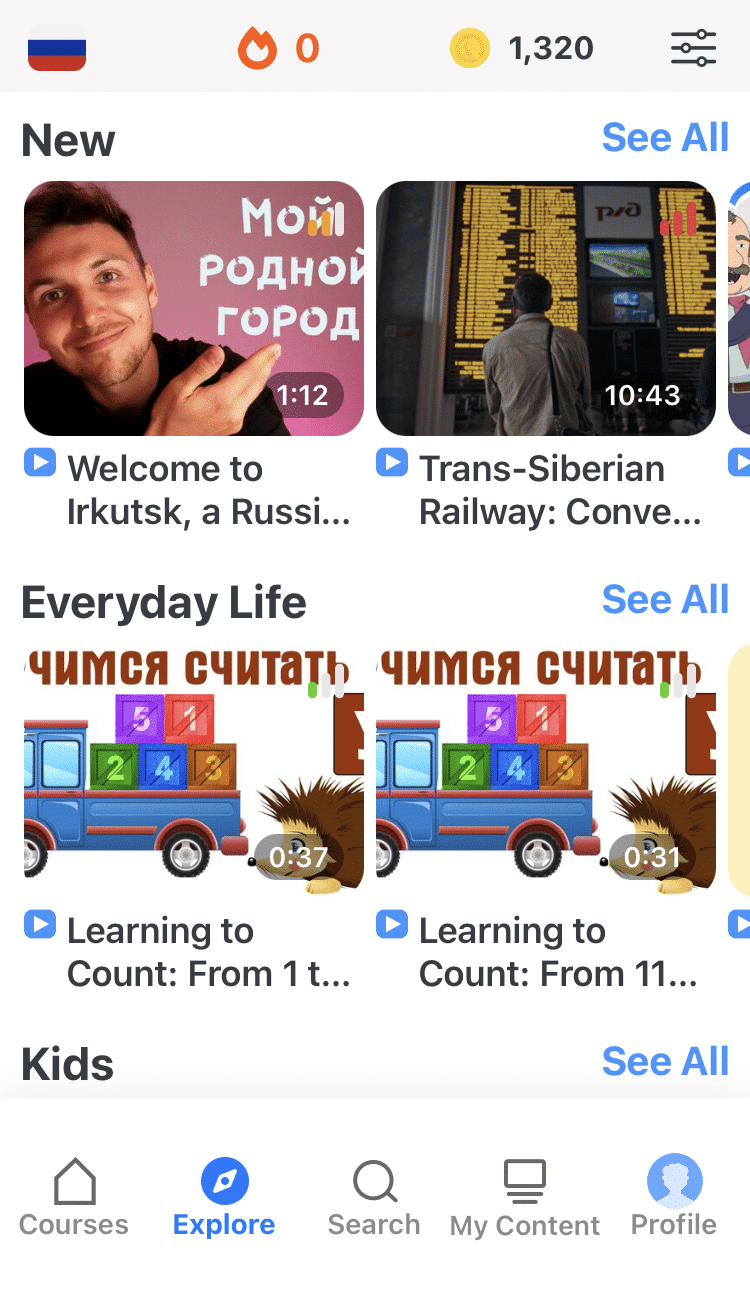
FluentU makes these native Russian videos approachable through interactive transcripts. Tap on any word to look it up instantly.
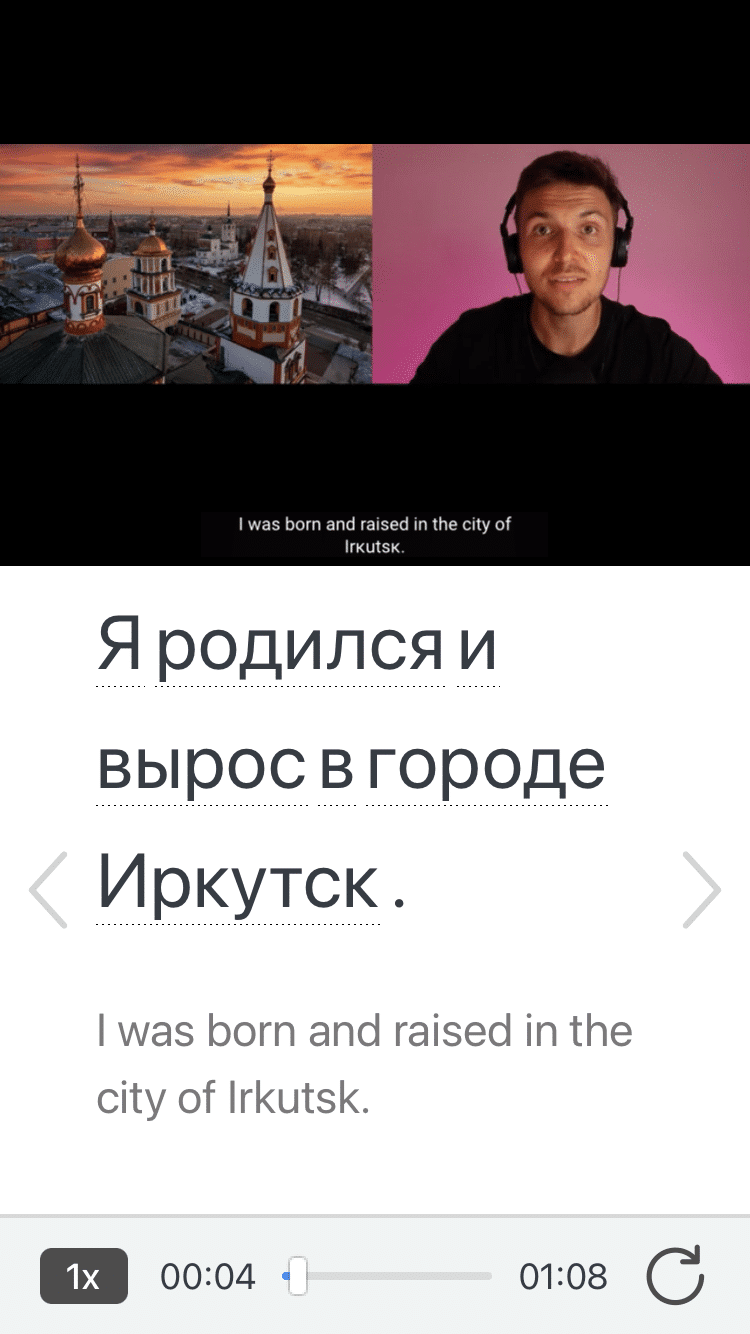
Access a complete interactive transcript of every video under the Dialogue tab. Easily review words and phrases with audio under Vocab.
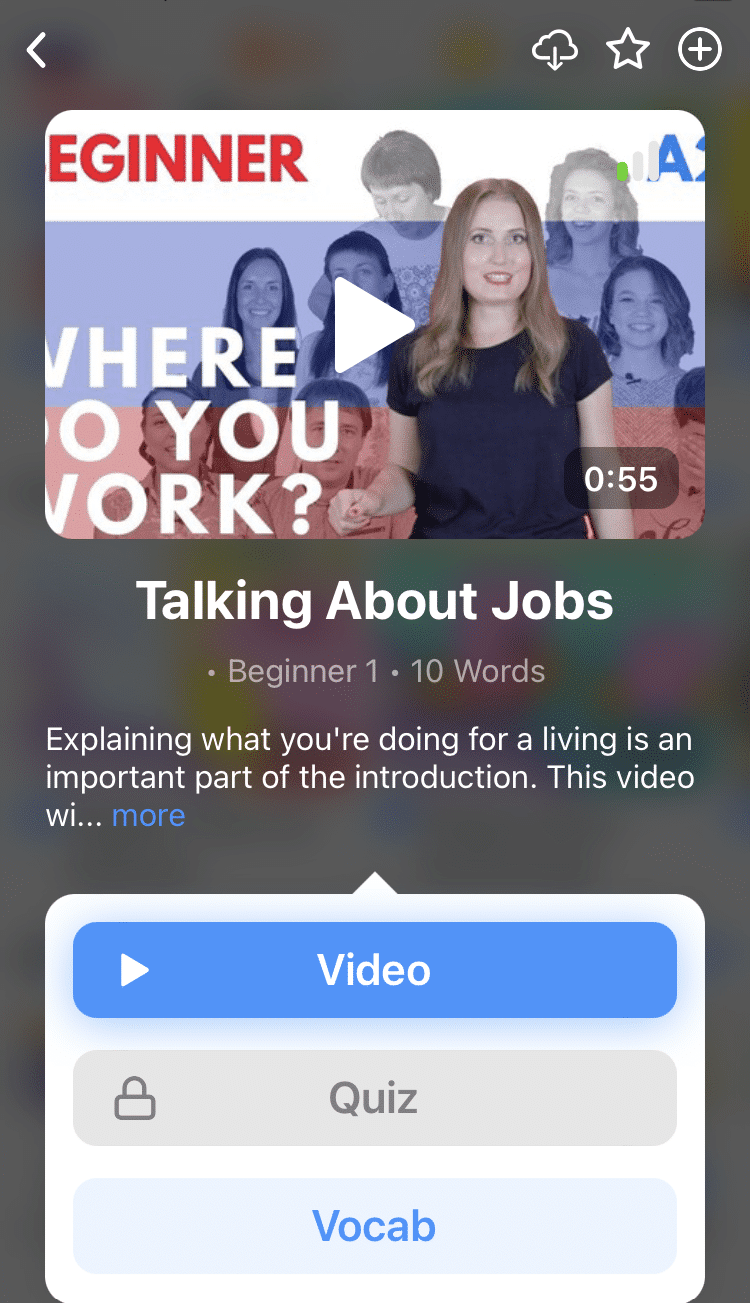
All definitions have multiple examples, and they're written for Russian learners like you. Tap to add words you'd like to review to a vocab list.
And FluentU has a learn mode which turns every video into a language learning lesson. You can always swipe left or right to see more examples.
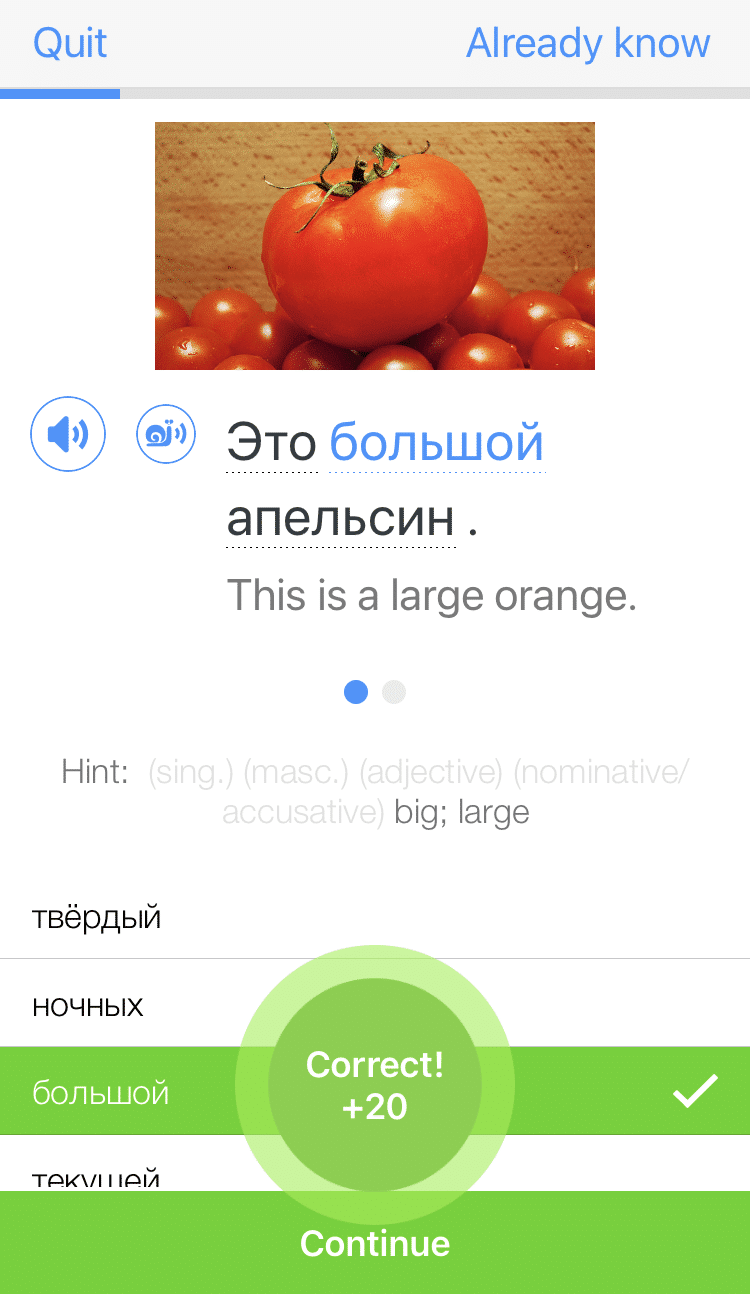
The best part? FluentU keeps track of your vocabulary, and gives you extra practice with difficult words. It'll even remind you when it’s time to review what you’ve learned. You'll have a 100% personalized experience.
Start using the FluentU website on your computer or tablet or, better yet, download the FluentU app from the iTunes or Google Play store. Click here to take advantage of our current sale! (Expires at the end of this month.)
